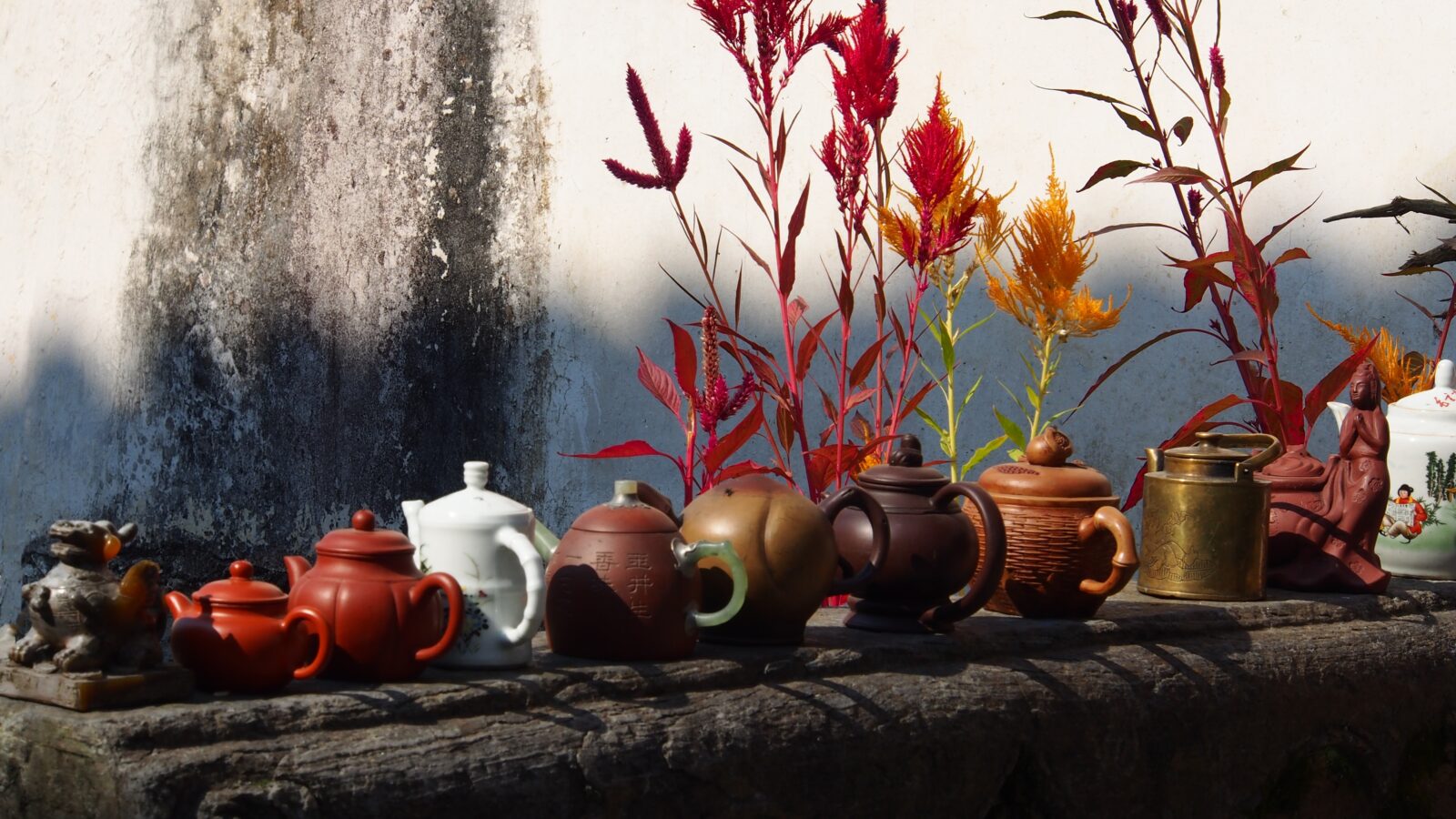Teaware Enhances Tea Experience, Offers Great Gifts
Ku Cha House now offering free shipping for orders $75 or more
We spend a lot of time evangelizing on behalf of our exquisite teas. We carry more than 250 teas, from Yunnan Province’s fermented pu-erhs and Fujian’s rock oolongs to Japanese senchas, Indian chais and dozens of herbal teas, most of them organic.
Many of them make splendid gifts, either individually, as part of collections, or through our new Build Your Own Tea Box platform.
But tea gifts range far beyond our whole-leaf teas. Given tea’s ancient roots across Asia and its important part of many different cultures around the world, including the United Kingdom, it has nurtured the development of beautiful teaware and accessories.
We feature our tea pots and cups, our strainers and tea pets and brew mugs throughout our shops in Boulder, Cherry Creek Denver and Fort Collins. They are much more than practical vessels for transforming dry leaves into cups of liquid ambrosia. In places where tea commands cultural significance, such as China, Japan and England, the teaware surrounding tea brewing serves as art.
Interested in sending a friend a beautiful teapot? Some tea and a tea pet (read more about tea pets below) too? Good news. Ku Cha House of Tea now offers free shipping to all orders $75 and over.
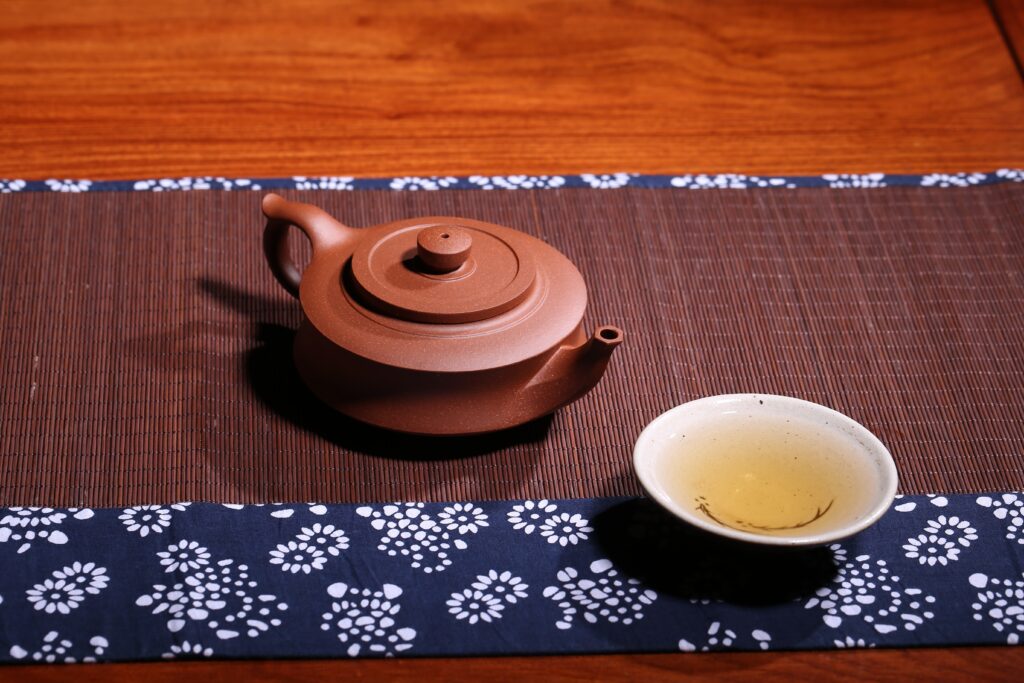
Teapot Invention
Artisans during China’s Yuan Dynasty invented the tea pot. People who loved tea in earlier dynasties skipped the pot: during the Tang Dynasty ground tea was boiled in a cauldron and poured into sipping bowls, and during the Song Dynasty people poured boiling water from kettles into bowls of ground tea leaves.
The first evidence of a teapot appears in a Yuan Dynasty text called Jiyuan Conghua, in which the author describes buying a teapot from a scholar. By the arrival of the following dynasty, the Ming, teapots had grown popular across China.
These early teapots were small, and many styles of teapots in China today remain smaller than what we normally encounter in the United States. That’s because teapots were designed to brew tea for single drinkers; the belief was that smaller pots better reveal tea’s complex flavors.
One of these styles of small teapots, called YiXing, were first crafted in Jiangsu Province during the Sung Dynasty around 1500. These clay pots became extremely popular by the 17th century, and remain so today. We are proud that our custom Ku Cha House of Tea cups are YiXing.
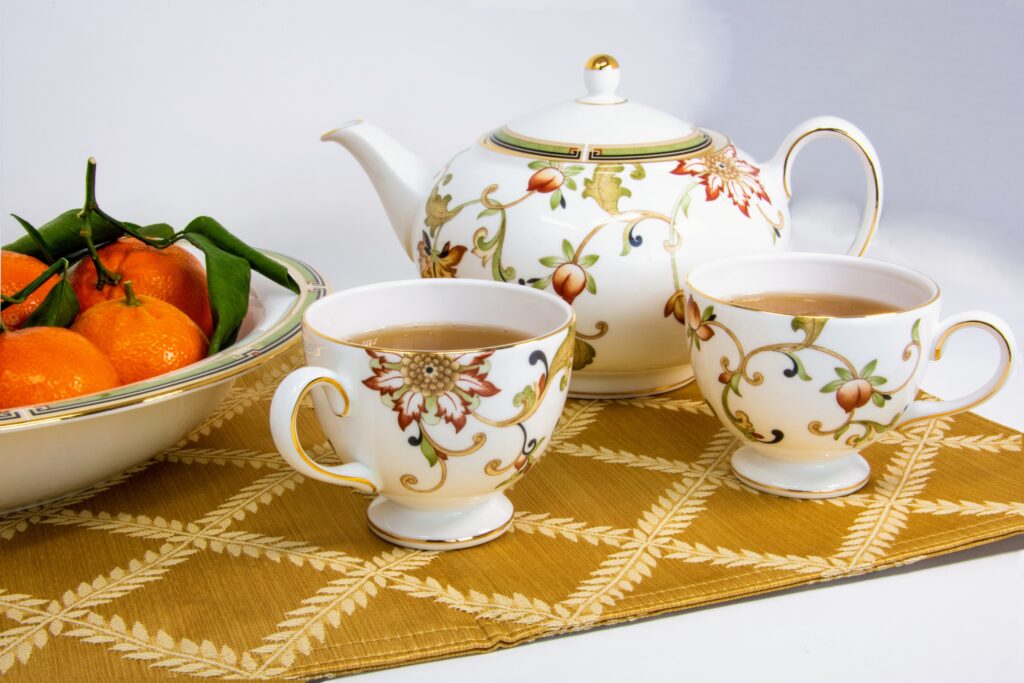
Chinese invented porcelain
Today’s teapots run the gamut, from Japan’s famous Raku porcelain pots to the elaborately decorated and ornate porcelain teapots common across the United Kingdom. As a side note, the Chinese invented porcelain; the white “bone” style common today emerged during the Tang Dynasty, between the years 618 and 908. By contrast, Europeans did not figure out how to create white porcelain until the middle of the 18th century.
In England, the town of Stoke-on-Trent became the industrial capital of teapot manufacturing. The team’s soccer team, Stoke City F.C., is nicknamed “The Potters” today, a reference to the city’s teapot-manufacturing heritage.
We love teapots at Ku Cha. We also adore teacups and the rest of the accoutrements associated with brewing tea. Looking for holiday gifts? You have come to the right place!
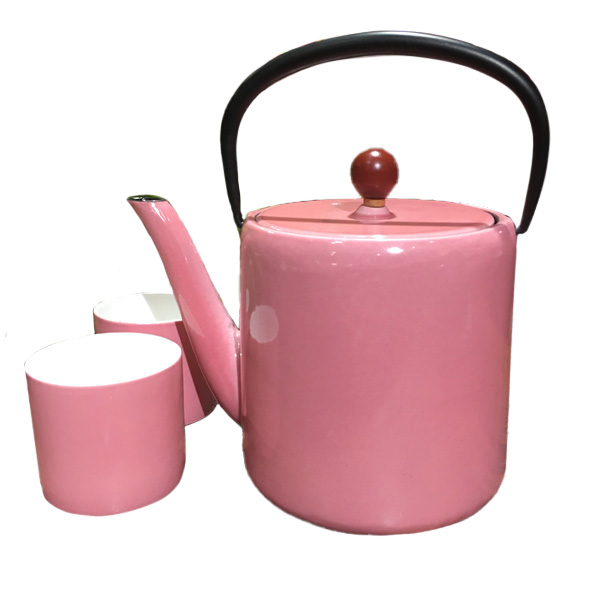
Cast Iron Teaware
The world offers loads of inexpensive tea pots — thin-walled metal vessels that sit on burners and whistle when water boils. And we like them just fine. But for people who truly love tea and desire tea pots that add decorative flourishes to kitchens, we champion cast-iron teapots from China.
These gorgeous, sturdy spectacles of fine workmanship preserve heat after the water comes to a boil, which is helpful. If you decide to brew a second cup of tea and need to boil water again, the water in the cast-iron teapot will quickly reach temperature again.
More importantly, though, these teapots are beautiful. One of these sitting on a kitchen stove improves the room’s decor. In addition, they are extremely stout. You might go through one of the cheaper teapots every few years, but you will never need to replace one of these. If you pass them on to grandchildren, they too will be able to grow old using their grandparents’ teapot.
Here, we feature one of the teapots, a sleek and sophisticated pink pot with two matching ceramic tea cups. But if this doesn’t appeal, do check out our inventory of classy cast-iron tea pots. Chances are, you’ll find something you love.
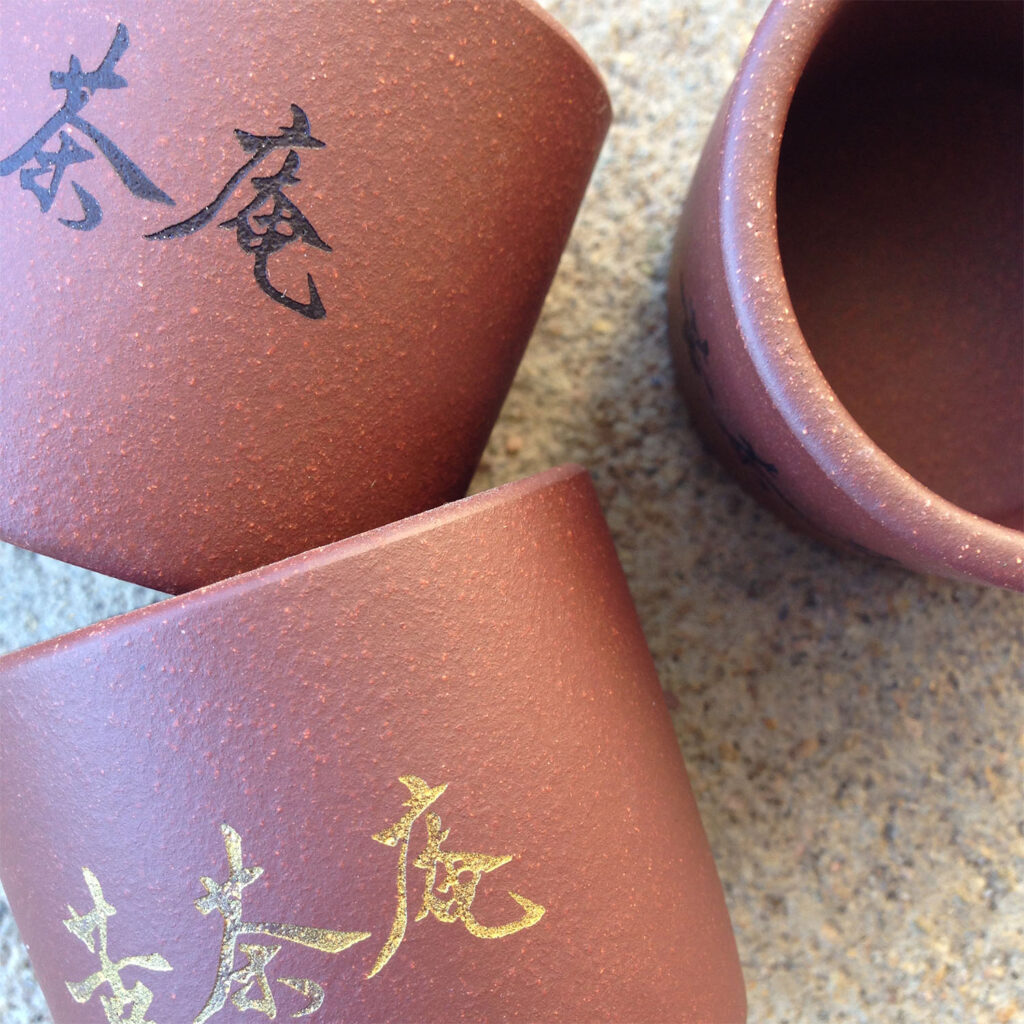
Ku Cha House of Tea YiXing Cups
As we mentioned earlier, teapots made from YiXing clay are esteemed and sought-after by tea aficionados. The pots are made in Dingshu (Jiangsu Province) along the shores of Lake Tai, one of China’s largest freshwater lakes.
The town is a popular tourist attraction due to the hundreds of teapot shops that fill Dingshu. If you become enchanted by YiXing teaware, then Dingshu is a must-visit.
One of the pleasures of tea vessels made from YiXing clay is their ability to retain and accumulate tea flavors over time. As a result, YiXing pots that have been used for a while gain their own unique “flavor.” People pass the pots down through generations, to preserve and evolve the pots’ character.
We love the clay pottery so much that we made sure Ku Cha’s custom tea cups were made out of YiXing clay. While YiXing pots can be quite expensive, our cups are quite affordable, inviting you to experience YiXing without having to drain your wallet!
In addition to YiXing cups, we offer a wide range of different styles of cups, including the one we will discuss next.
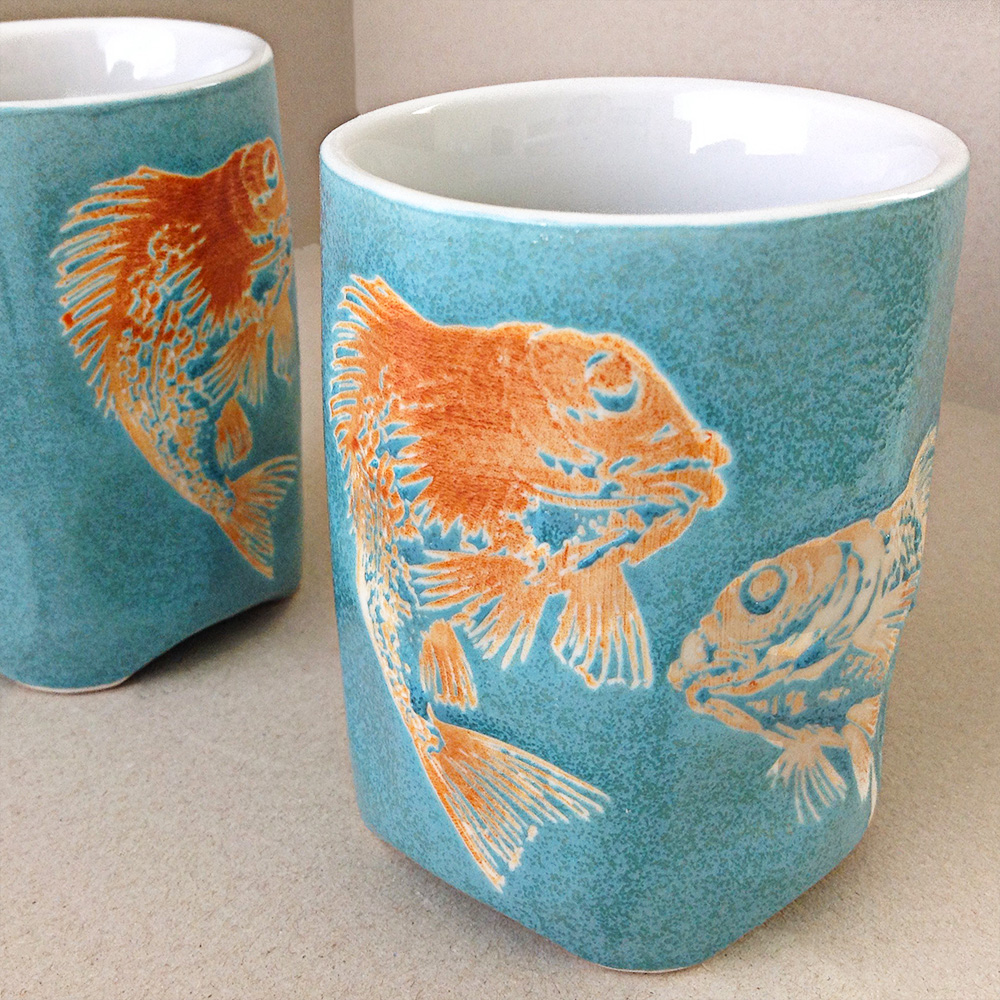
Snapper Cup
As in China, teacups come in a variety of sizes and styles in Japan. One of the styles is known as “sushi teacup,” which are larger, sturdy teacups commonly found in sushi restaurants. We find sushi teacups arresting, both visually and in the hand. Their lack of handles and textured, often misshapen surfaces make them pleasing vessels for savoring tea.
Our “snapper” cup offers an appealing motif of red snappers on a blue background — it looks like a pair of fish swimming through tropical waters.
But our line of tea cups includes more than the snapper cup. Take a tour through our tea cups and mugs. We offer beautiful cups, quirky mugs (one involving sumo wrestlers) and extremely practical mugs that come with their own tea brewing accessories.
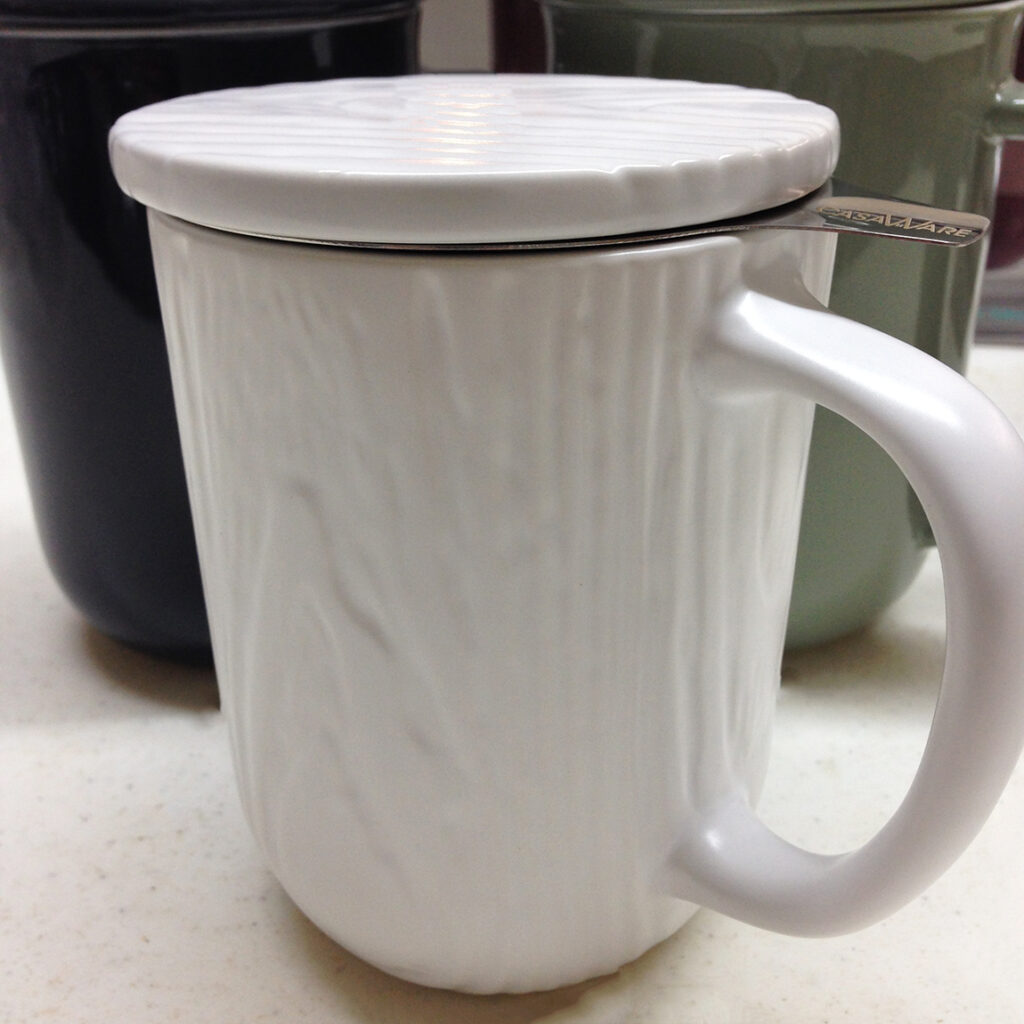
Casaware Infuser Mug
Infuser mugs — we carry several — are by no means traditional examples of teaware. But if somebody had invented them hundreds of years ago, we trust they still would be popular today. These are wonderful and highly practical devices, which let you brew individual cups of tea, while on the go, without needing separate teapots and cups.
We are awfully keen on our Casaware Infuser mugs, which we offer in several colors. These stoneware mugs offer a stoneware lid as well as a stainless steel infuser with a v-shaped clip. The clip lets tea drinkers tilt the infuser over the cup after brewing, permitting all of the tea to drip into the cup. When it’s done, the lid is designed, when upturned, to serve as a holder for the infuser. It’s ingenious.
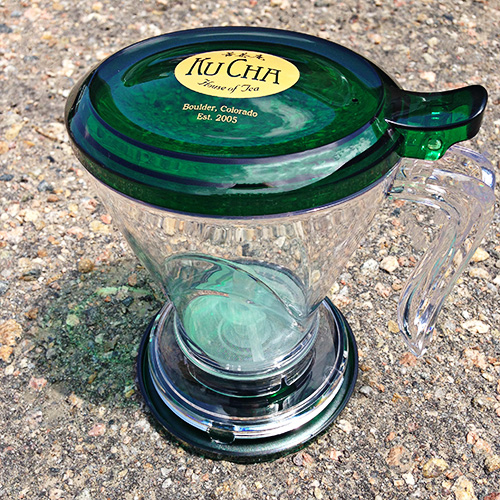
Ku Cha Tea Maker
Sometimes you prefer proper tea pots for brewing your leaves of Camellia sinensis. But then there are times when you might be in the office, or traveling for business or pleasure (the office and travel will resume in 2021!), and you desire drinking brewed, high-quality loose-leaf tea without wanting the tea pots you use at home.
That’s when you need our handy tea maker, which lets you brew a pot of tea in a pot that sits over your mug or cup. When the tea is finished brewing, the tea maker lets the liquid pour into the drinking vessel, while keeping the tea leaves in the pot.
Even though we are surrounded by brewing vessels, we often turn to the Ku Cha tea maker for quick pots of our favorite beverage.
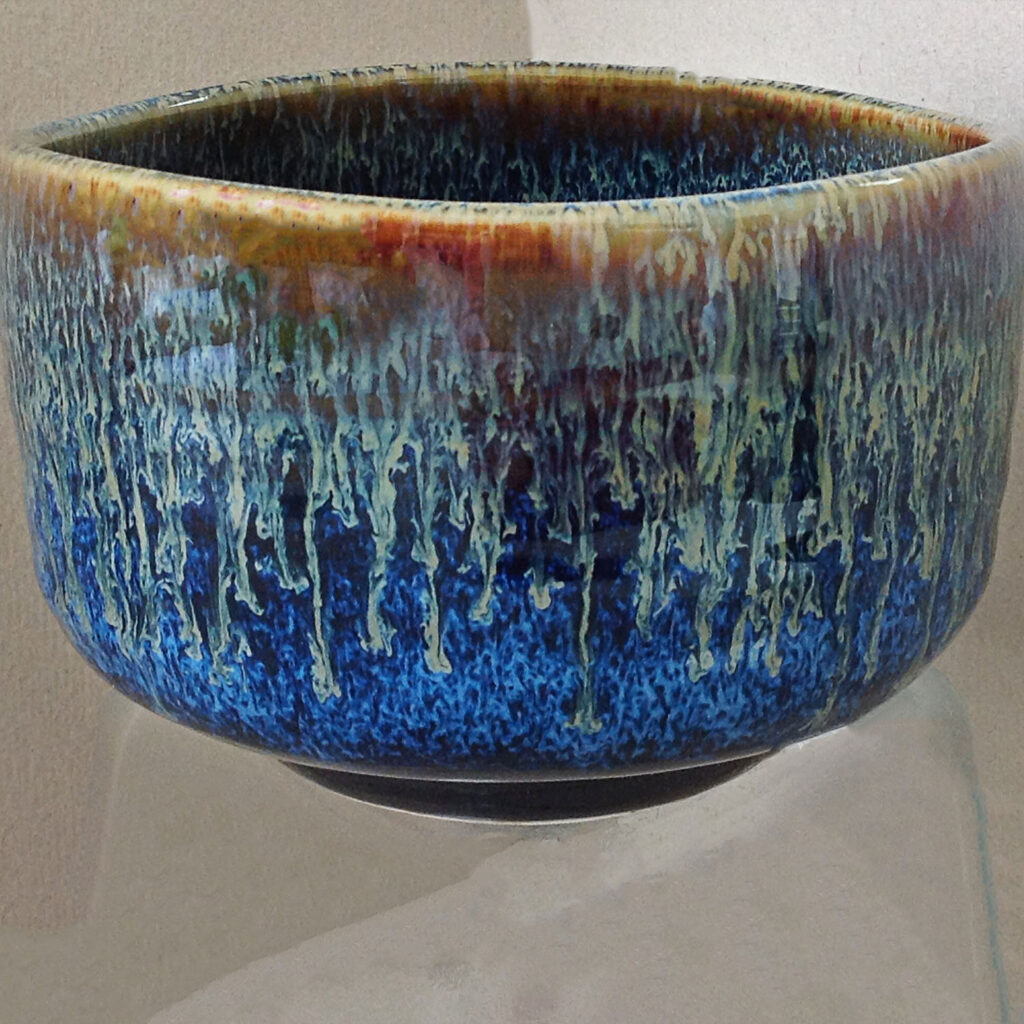
Japanese Tea Ceremony Accessories
The Japanese famously play meticulous attention to craft and detail for myriad pursuits and interests, from crafting sushi to weaving tatami mats to arranging flowers. Count the preparation of tea as another object of Japanese passion.
The famous Japanese tea ceremony involves many different steps. We won’t delve into the particulars in this post. But we will trumpet the teaware designed for the ceremony.
The matcha bowls can be sublime, with their sturdy walls and artful designs. The ceremony includes bamboo whisks and spoons, as well as matcha sifters. We carry all of the above at Ku Cha, as well as the matcha tea itself. For anybody interested in tea, or for people who have embraced matcha in lattes and pastries, offering gifts of proper matcha teaware and accessories is sure to delight.
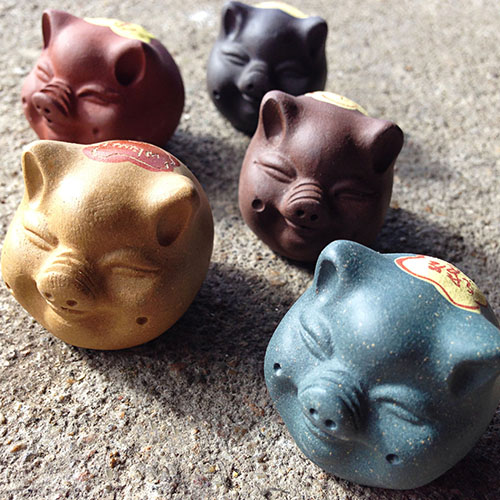
Pig Head
Finally, while tea can sometimes seem quite serious (see: Japanese tea ceremony) it’s also filled with whimsy and play. In China, people have “tea pets,” clay figurines that join individuals and groups as they enjoy rounds of tea.
We carry several tea pets, including the pig head, which indeed is the smiling head of a pig sculpted out of that outstanding YiXing clay. When you pour your tea sacrifice over the pig’s head, it blows small bubbles of gratitude.
People in China believe pigs bring good luck and fortune. We can’t be sure, but we nevertheless always invite our tea pigs to our tea gatherings.
These beauties are affordable and small — perfect stocking stuffers!

